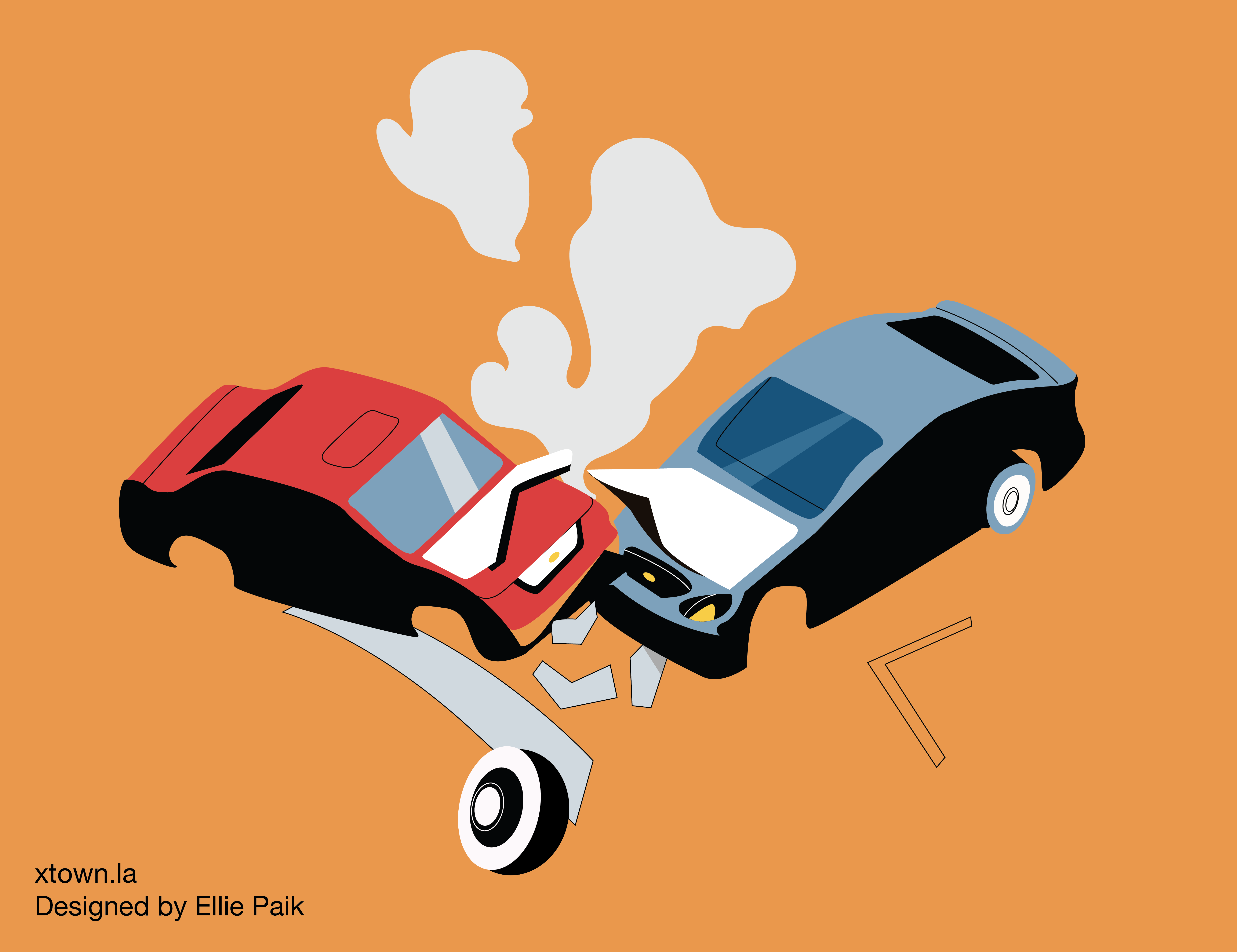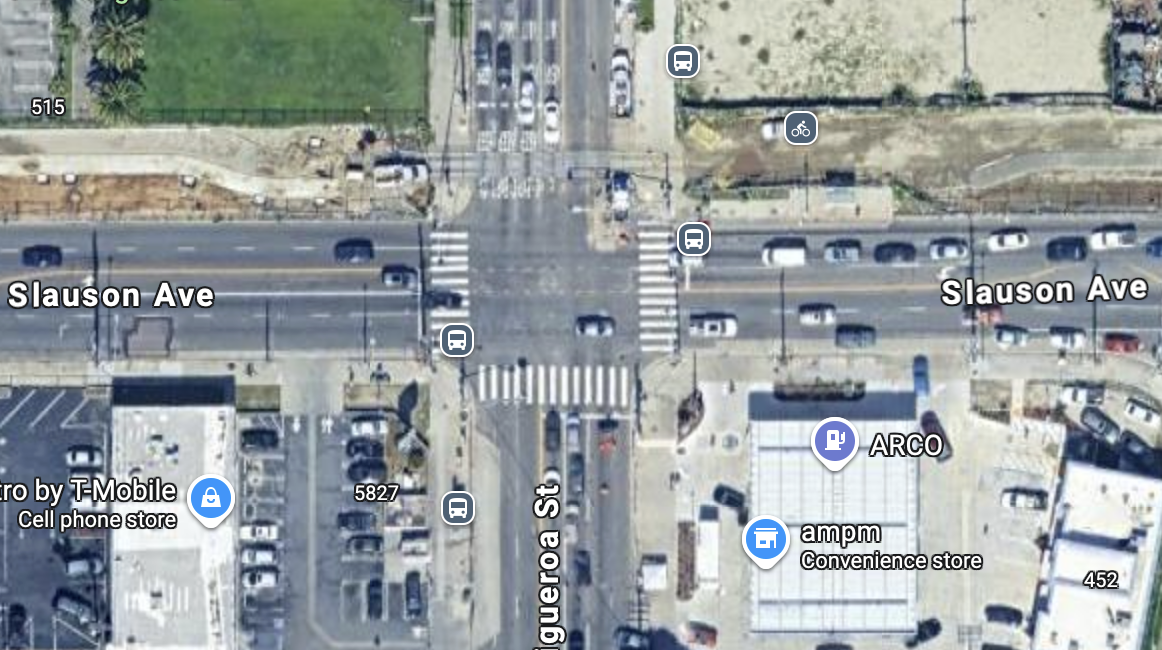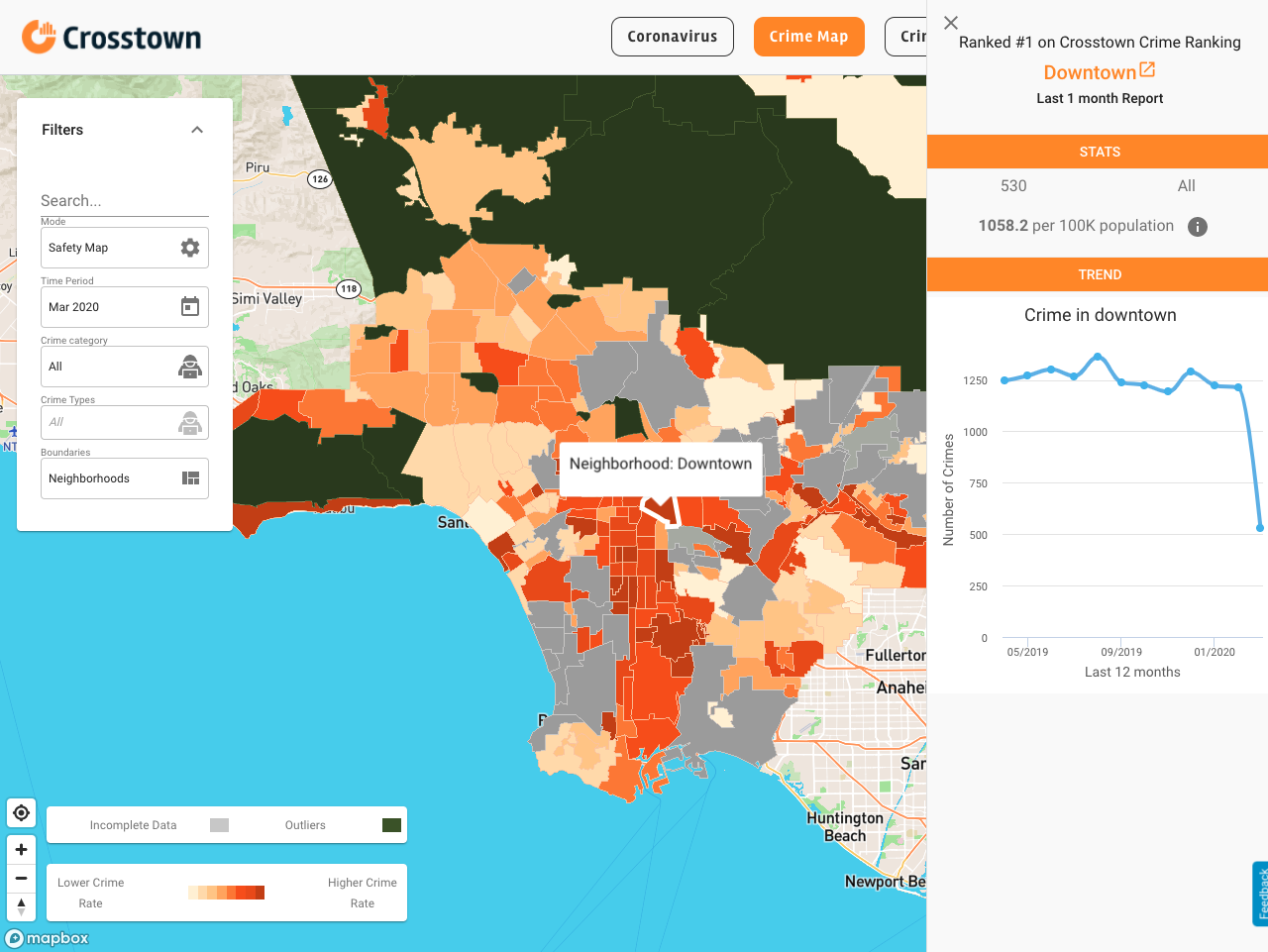The most dangerous intersections in Los Angeles

Where South Figueroa crosses Slauson Avenue, bad things happen. Over the past four years, the intersection has been the scene of 17 felony hit-and-run collisions and five severe injuries. The crosswalks aren’t safe, either: seven pedestrians have been struck there.
All told, there were 66 serious collisions at the intersection, which is in the Vermont Slauson neighborhood in South Los Angeles, making it the most dangerous in the entire city during that period.

Slauson and S. Figueroa had more serious collisions than any other intersection in Los Angeles.
Recently, Los Angeles streets have become more lethal, with the number of traffic fatalities exceeding the number of homicides for the past three years—with more than 300 people killed annually in collisions each year since 2022. Serious injuries resulting from collisions, as well as vehicle-pedestrian collisions, also far exceed pre-COVID totals.

Crosstown compiled a list of the 20 most dangerous intersections in the city over the past four years based off of data from the Los Angeles Police Department. Some of these intersections have similar issues, such as proximity to freeway offramps. Figueroa and Slauson, for example, is a block from an exit to the 110 Freeway. Others have inadequate traffic signals or signage.
In the San Fernando Valley neighborhood of Panorama City, the intersection of Sepulveda and Roscoe recorded 65 serious collisions over the past four years. One of those was a hit and run, where a 38-year-old male riding a bicycle was struck and killed. It, too, is close to a 405 Freeway offramp.

Panorama City Neighborhood Council Chair Tony Wilkinson attributes the intersection’s danger to its proximity to a freeway. “The Sepulveda intersection is just two blocks from the 405, so you’ve got lots of traffic coming from far north and far south to turn on Roscoe.”
Wilkinson noted how safety measures designed to reduce the Valley’s traffic problems, including the addition of more signalized intersections, have been applied to streets like Van Nuys Boulevard, but have yet to be seen on Sepulveda. “Drivers on Sepulveda are still going faster than drivers on Van Nuys,” said Wilkinson.

Vision Zero went nowhere
In 2015, then-Mayor Eric Garcetti used an executive order to launch “Vision Zero,” an initiative designed to dramatically reduce traffic deaths through a wide-ranging set of proposed improvements to road design, education and more. Despite the aim of eliminating traffic deaths by 2025, road safety took a turn for the worse. This spring, the city released a lengthy audit of what went wrong
Among the causes: Only half of the listed “actions” were ever completed. The plan lacked a program for accountability among city departments. There was poor coordination and diminishing participation from the LAPD’s traffic division.

‘Behind the wheel of a monster’
Lieutenant Jesse Garcia, the acting commanding officer of the LAPD’s West Traffic Division, says his officers are fighting an uphill battle. “The top factors [in crashes]: speed, stop signs, cell phone, red lights, obeying posted signs,” he said. “We’re not even talking about DUI. That’s a whole different animal.”
There are some effective mitigation tactics, but even those can face pushback. Garcia noted that in the Valley, rumble strips were installed on several major thoroughfares. “They have some success with slowing down prevailing speeds. The downside was the noise, and the community complained,” he said. “Speed bumps can’t be put on major thoroughfares.”
Another factor contributing to the problem is the size and power of modern vehicles. “To be brutally honest, one of the big things we have seen through COVID is that a lot of these vehicles coming off the showroom floor are, for all intents and purposes, race cars,” said Garcia. “They are coming in with 400-500 horsepower. In more affluent areas, you have kids driving mom and dad’s car. They’re getting behind the wheel of a monster.”
Unenforced errors
Damian Kevitt, founder of the advocacy organization Safe Streets Are for Everyone, notes another change that he contends has resulted in more dangerous driving: a sharp decline in the number of moving violations issued by the LAPD.
“We have a spike in fatalities that is related to the drop in traffic citations,” said Kevitt. “The streets are the same, but the fatalities are greater. The biggest change was that they stopped enforcing traffic citations.”
His organization published a report detailing how dangerous—and how preventable—running a red light can be. Kevitt notes that there are proven strategies that can make streets safer—such as red-light cameras, which have been shown to reduce collisions by as much as 30%.
Thus far, few cities in California deploy them because until recently the law outlining their usage was deeply flawed. There are no red-light cameras installed by the city of Los Angeles, for example, though there are several that have been put up by LA Metro near rail lines.
This month, however, Gov. Gavin Newsom signed SB 720, the Safer Streets Act, which should pave the way for more red-light cameras across the state.
Counting collisions
The Crosstown intersection analysis runs from February 2021-Feb. 28, 2025. Shortfalls with LAPD public data as the department transitions to a new records management system makes it impossible to track collision data over the past seven and a half months.
How we did it: Crosstown analyzed over 10 years of collision data from the Los Angeles Police Department in order compile fatality and injury statistics and to rank intersections with the most crashes. We supplemented the 2025 data with Compstat reports.
Have questions about our data? Write to us at askus@xtown.la.






